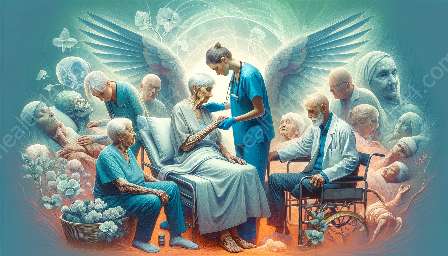An aging population is transforming various aspects of society, influencing healthcare, economy, and social dynamics. This topic cluster explores the societal impacts of aging, as well as the concepts of optimal aging, successful aging, and geriatrics.
Optimal Aging: Ensuring Quality of Life
Optimal aging emphasizes the importance of maintaining health and well-being as individuals grow older. It involves promoting physical, mental, and emotional wellness to enhance quality of life in later years. This approach encourages active engagement, healthy lifestyle choices, and preventive healthcare to support aging individuals in living fulfilling lives.
Successful Aging: Thriving in Later Life
Successful aging encompasses not only maintaining health and well-being but also achieving a sense of fulfillment and purpose in old age. It focuses on personal growth, meaningful social connections, and continued involvement in society. This concept highlights resilience, adaptability, and the pursuit of life satisfaction, underscoring the diverse pathways to a fulfilling later life.
Geriatrics: Addressing Healthcare for Older Adults
Geriatrics is the branch of medicine dedicated to providing specialized care for older adults. It encompasses the diagnosis, treatment, and management of health conditions that commonly affect aging individuals. Geriatric healthcare professionals aim to optimize the well-being and functional capabilities of older patients, addressing age-related health concerns with a comprehensive and personalized approach.
Societal Impacts of an Aging Population
As the global population continues to age, profound societal impacts are emerging across various domains, shaping the fabric of communities and economies. Understanding these influences is crucial for developing strategies that support the well-being and inclusion of aging individuals while ensuring the sustainability of societal systems.
Healthcare Challenges and Innovations
With an aging population, healthcare systems face the challenge of addressing complex health needs while ensuring accessibility and affordability. Chronic conditions and age-related illnesses require specialized care, leading to increased demand for geriatric services and healthcare resources. Innovations in medical technology, preventive care, and interdisciplinary approaches are essential for enhancing the quality and efficiency of healthcare for older adults.
Economic Considerations and Opportunities
The aging population also impacts economic dynamics, influencing labor markets, pension systems, and financial sustainability. As the proportion of older adults rises, there is a shift in workforce demographics, creating implications for productivity, skill shortages, and retirement policies. Additionally, opportunities arise in sectors catering to the aging population, such as eldercare services, age-friendly housing, and leisure and recreation offerings tailored to older individuals.
Social Dynamics and Community Engagement
Changes in demographics and family structures due to an aging population contribute to shifts in social dynamics and community engagement. Interpersonal relationships, caregiving responsibilities, and intergenerational interactions are influenced by the growing prevalence of older adults. Creating supportive and inclusive environments that foster meaningful connections across generations is vital for nurturing cohesive and compassionate communities.
Conclusion
The societal impacts of an aging population are multifaceted, encompassing healthcare, economy, and social dynamics. Embracing the principles of optimal aging and successful aging can guide individuals, communities, and institutions in addressing the challenges and opportunities presented by demographic shifts. By promoting holistic well-being, supporting geriatric healthcare advancements, and fostering intergenerational solidarity, societies can navigate the transformative effects of an aging population with resilience and compassion.


